Posts Tagged: leaves
Some Very Hungry Caterpillars
What an amazing photo! Vacaville resident Cindy Carmouche, a nurse at Kaiser Permanente, captured a photo of early instar redhumped caterpillars...
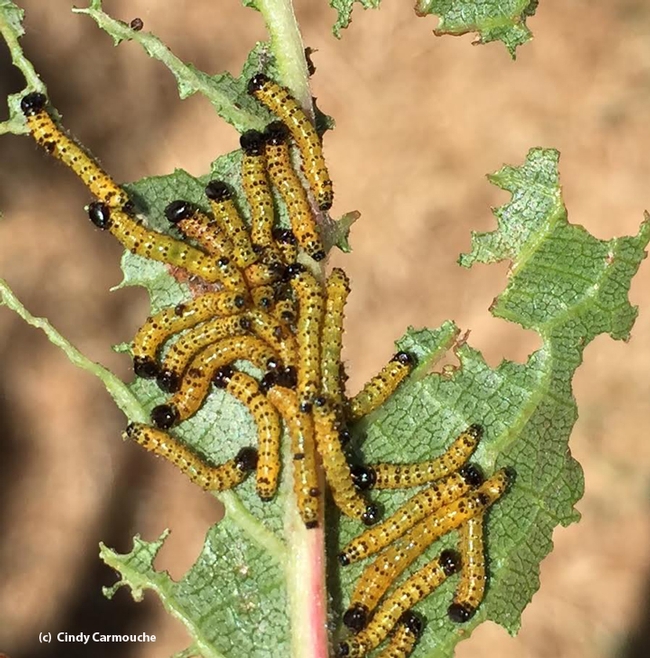
Cindy Carmouche of Vacaville captured this amazing photo of early instar redhumped caterpilllars eating the leaves of her French prune tree.
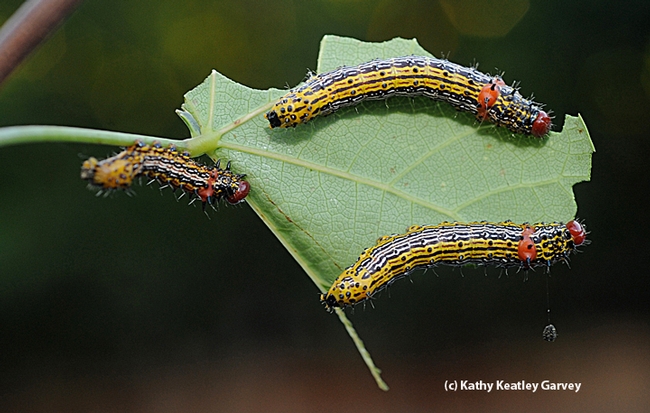
This photo shows several redhumpbed caterpillars dining on the leaves of a redbud tree. (Photo by Kathy Keatley Garvey)
Fall
Fall is a well-named season. Downed leaves are filling rain gutters, carpeting lawns and blowing into the nooks and crannies of yards all over Solano County.
I’ve noticed something that accompanies all those leaves hitting the ground, and it’s just as annoying: leaf blowers.
(I promise this will not be a screed on blowers. They have their place in modern yard maintenance. But do we really have to fire up those blowers at 7:30 a.m. on a Saturday? And, honestly, does anyone rake anymore?)
All of this begs the question: Do we really need to clean up and haul off all those fallen leaves, only to turn around and buy bags of mulch for our yards? What’s the research-based word on using our leaves as “free” mulch? The University of California Cooperative Extension Central Coast & South Region Center for Landscape and Urban Horticulture has created a list of the pros and cons of mulch that’s very helpful. Bottom line: It does indeed pay to use your own leaves as mulch. It helps to control weeds, conserve moisture, moderate soil temperature, enhance water absorption, prevent erosion, and enrich the soil.
The key is to use only healthy leaves. Don’t toss in the mildewed grape leaves or the rust-infested rose leaves. Do consider using those pecan or walnut shells as mulch.
Another suggestion I’ve seen in the quest for successful mulching is a leaf shredder. Or, if you don’t want to go out and pay for a shredder, use your lawn mower to chop up the leaves, gather them up and spread a 2- to 4-inch layer around your plants. Remember, mulch should be used as a top dressing only. Do not mix raw mulch in with your garden soil, as it will deplete the nitrogen level in your soil as it decomposes.
My husband rakes up the leaves on our property and tosses them into compost piles. We eventually get lovely shovelfuls of leaf mold, compost that uses only leaves. Here’s a link to another UCCE article on making leaf mold, which you can use as a soil amendment or mulch.
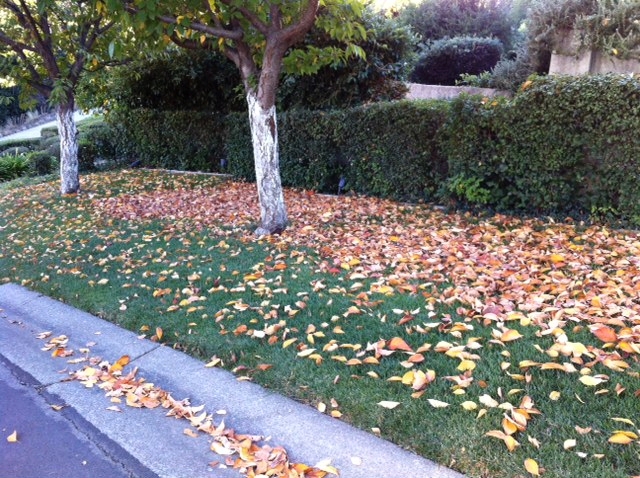
A neighbor’s normally spotless front lawn is barely visible under a blanket of newly fallen leaves. (Photo by Kathy Thomas-Rico)
Edible Flowers
Lately I have been enjoying learning about edible flowers. It started about six weeks ago when two different customers (I am the seed buyer at “Orchard Nursery and Florist” in Lafayette) asked me about seeds for edible flowers. I knew a few of them such as nasturtiums, pansies and chives, but I needed to know more. Fortunately one of the other nurserymen was scheduled to give a class to our customers on the subject which added more to my list. Then there was a great article in the Contra Costa Times on Saturday March 9th, http://www.mercurynews.com/home-garden/ci_22739632/more-homes-flowers-are-moving-from-table-centerpiece and then on April 4th an article was published in the weekly Orchard Nursery Newsletter. Suddenly my “plate” was overflowing with edible flowers!
I looked around my garden and found a number of the listed flowers, so I started using them in salads and as decorations to our dinner plates. First I picked some calendulas and added them to salads. They don’t have much of a taste but they add great color. Then I put a pansy on each plate when I was entertaining friends. The little pansy-faces brightened up the rice dish and added to our conversation. The ones I served had a slight sweet taste, but some are very mild and benefit from salad dressing. Next I used nasturtiums that had over-wintered. They were great in the salad and added a different texture and a peppery taste. I realized I have already been using the flowers of rosemary with a pine-like flavor and thyme which has a lemony flavor, as I combine the two herbs for a meat rub, and sometimes the flowers get mixed in with the leaves.
I’ve heard about using zucchini blossoms and I mistakenly thought if I cut off the blossoms I would be sacrificing the number of zucchini. Not so because the plant produces more male flowers than it needs and it is not hard to identify them with their long stalk winding throughout the plant. The female blossoms, on the other hand, usually grow close to the center and have a stubby stalk that, when fertilized, swells into a mini squash. Some recipes call for using the small squash while the flower is still attached.
As I plant my edible garden this year with tomatoes, cucumbers, beans and squash I will be adding some edible flowers not just for the garden but for our dinner plates. Some easy ones are: Chives with an onion flavor, basil with a lemony minty flavor and borage with a sweet cucumber flavor. I’ll only pick flowers from plants that I know have been grown with no sprays, harmful chemicals, or where dogs or cats run free. Picking flowers for dinner in public areas is not advisable as you have no idea how they were grown and what is on them.
Growing flowers is one thing and knowing how to use them in recipes is another. There are a number of books out, but I find it easier to use the web. A good site with great pictures is http://www.epicurious.com/articlesguides/seasonalcooking/farmtotable/edible-flowers-anise-hyssop
Do you have a favorite edible flower and recipe?
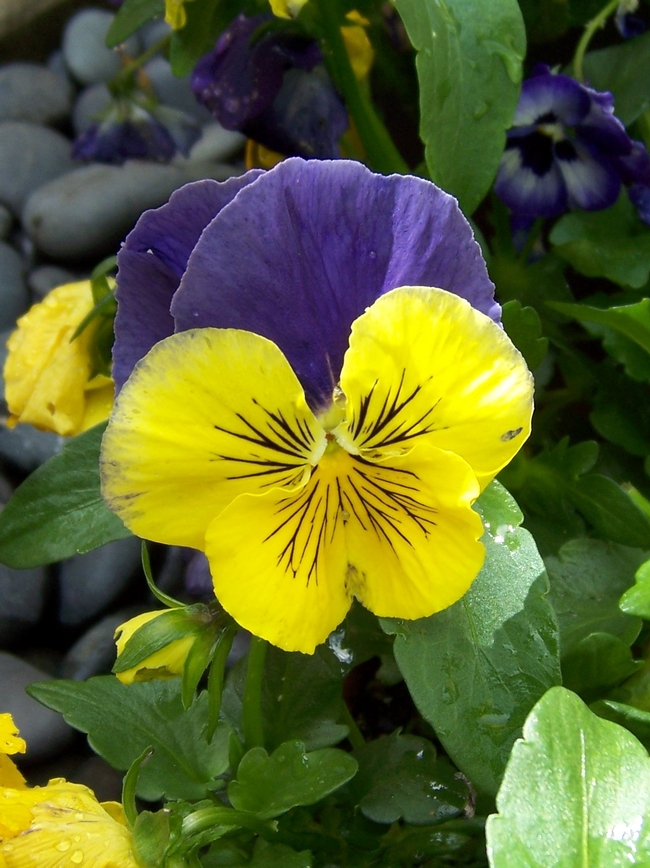
Pansy (photos by Libbey McKendry)
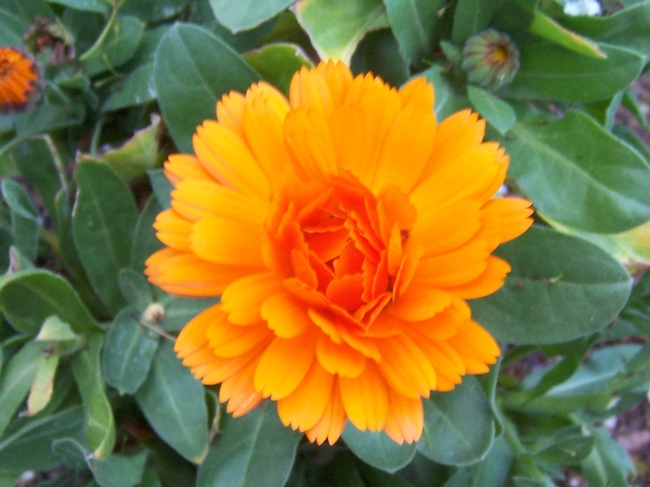
Calendula
Leaf Mold
I spend a lot of time reading the gardening articles produced in England during the middle of the past century. I find the material soothing, as I can’t possibly be expected to actually do anything that is advised. I was interested however, in the vast amounts of “leaf mold” that was believed to be crucial in their gardens. I have since discovered that it is nothing more than compost with a more interesting name.
My own yard is small, steep, and accessible only by stairs on either side of the house. Weary of hauling things up and down in buckets and bags, I have made various attempts at composting on a small scale. One successful measure was to create a “leaf mold bucket” that produced a decent soil amendment about four times per year. The container is a 15 gallon plastic nursery pot that came with a tree. The key is to be selective about what goes into it. I start with leaves, but not just any leaves. Broadleaf deciduous leaves such as sycamore or maple will do well. I have kiwi vines that supply leaves both when they fall in November and again in April when they are pruned. So the pot is filled with leaves and then tamped (you can just step into the pot). Then it topped off with more leaves and tamped again, and again. This is why you have to be choosy about your leaves because they should be dry and brittle so they will crumble. It is surprising how long you can keep this up in such a small container, as the leaves really have little volume when crushed. This special bin hangs out with me for weeks as I periodically sweep the patio of leaves. When the pot really can accept no more leaves, it gets moved to an area of the yard that gets over-spray from lawn irrigation. A little added nitrogen in whatever form you like will help a lot. The top is covered with a scrap of landscape cloth and tied down. It sits in full sun as I am operating under the theory that thermophilic bacteria do not know why it is hot, and they are unaware that they lack the 1.5 feet of insulation they would have in a real compost pile. The black plastic does indeed keep the material warm and you can judge your success by how rapidly the volume decreases. If you want to aerate the leaves, just roll it along the ground for a bit. When the volume decreases to 50%, you should have something that looks like purchased compost and you can amend your soil or use it for mulch as needed.
I really should emphasize that this is not real composting and I am relying heavily on bacteria and fungi to break down the leaves. No kitchen waste is added except for rare doses of coffee grounds. It only works because the leaf particles are so small when the project begins and relatively free of weed seeds. However, if space is limited and you would like to do something with your leaves besides plunking them for curbside pick-up, leaf mold in a pot is an option.
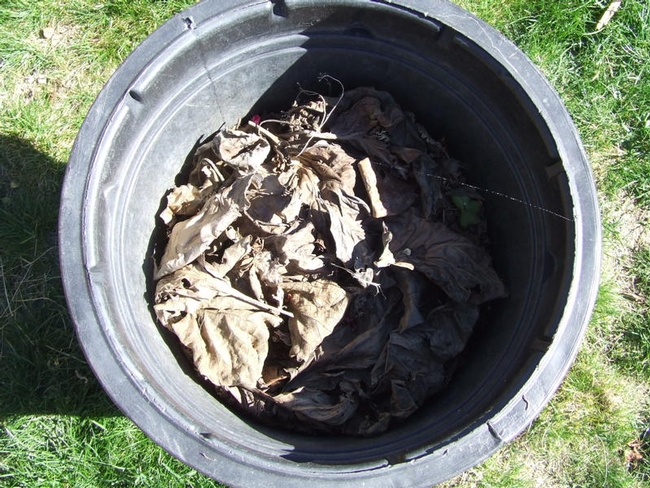
Leaf mold. (photo by Meg Grumio)
An Invasive Plant to Avoid
Do you remember when you were a child and you had to help in your mother’s garden. I do and it seems she always had a plant that you loved maybe because of the color or shape of the flower and thought when I have “my own place” I will have that plant.
Sad to say I did just that, the plant I choose that my mother had growing in a container. I always wondered why when her others were growing in the soil, but as a child I never asked. But years later I found out why when mine out grew the container I had it in and violets started showing up all over my yard. Maybe the only nice thing I can say about this violet is it blooms late winter, early spring with just the flowers and no leaves when most things are still dormant. After the violet colored flowers fade, the heart-shaped leaves start to appear and stay and multiply and grow larger each day until late fall early winter when they die back, only to return the next winter with many more.
These violet are all over my yard, sun or shade-makes no difference to them they will grow and multiply. You pull them out thinking you have got all parts of the rhizome, only to turn your back and they are back again!
This plant has to be on the most invasive plant list; maybe even in the top group, if not I am going to start a campaign to have it added. Maybe the only way I can get rid of them is to move, but knowing how much of pest they are they probably will find a way to follow me.
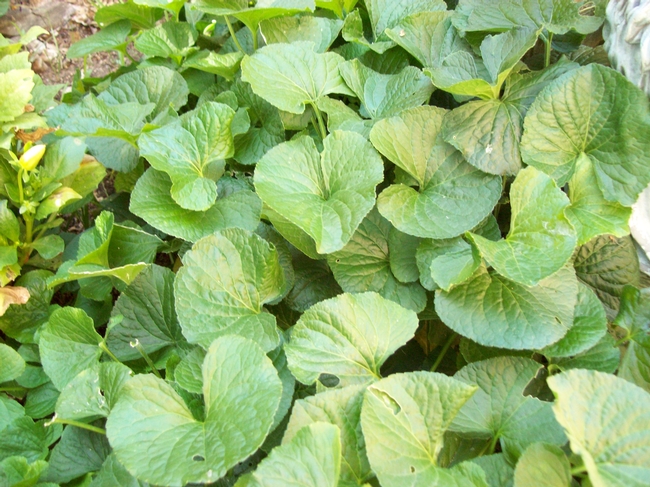
violets 001

